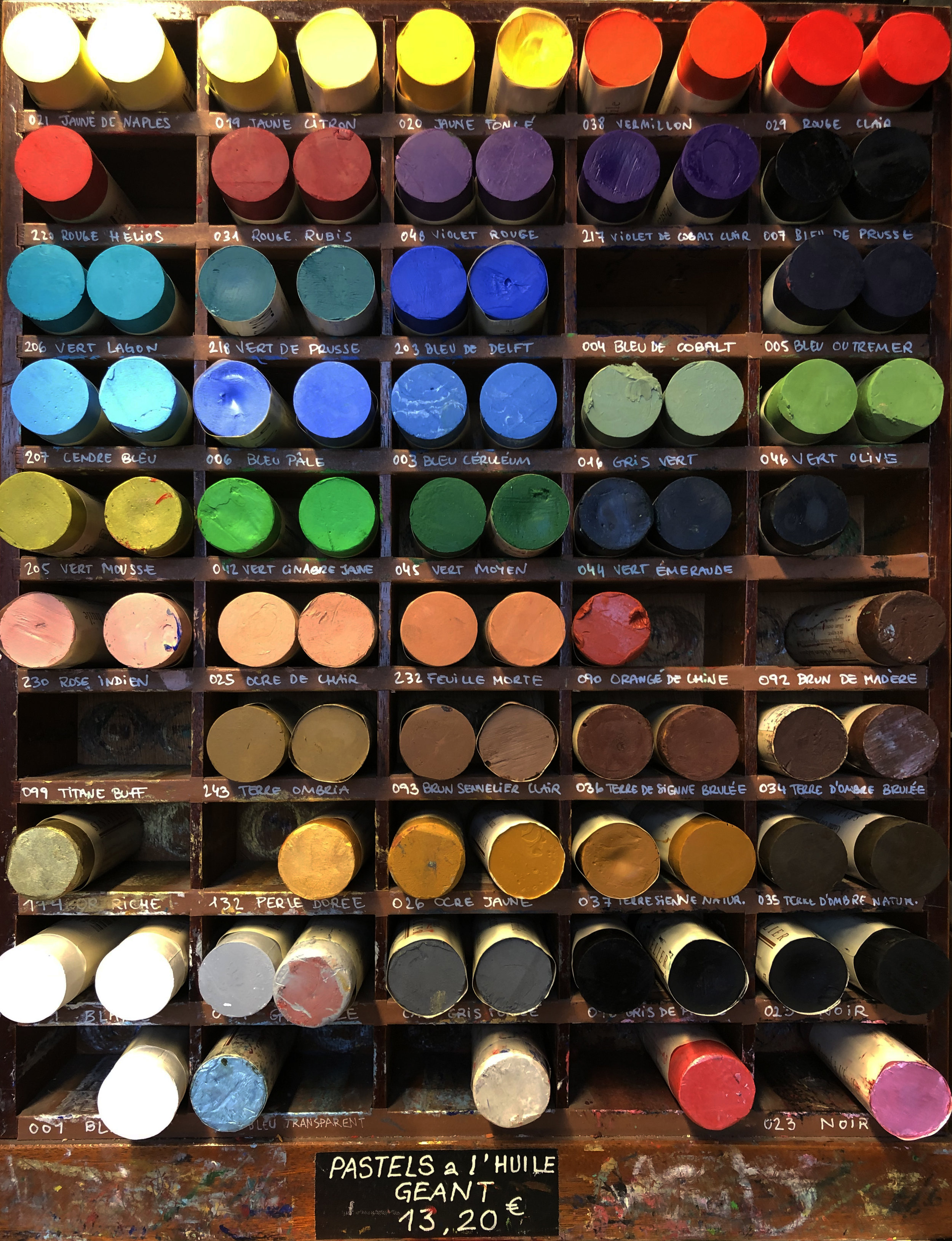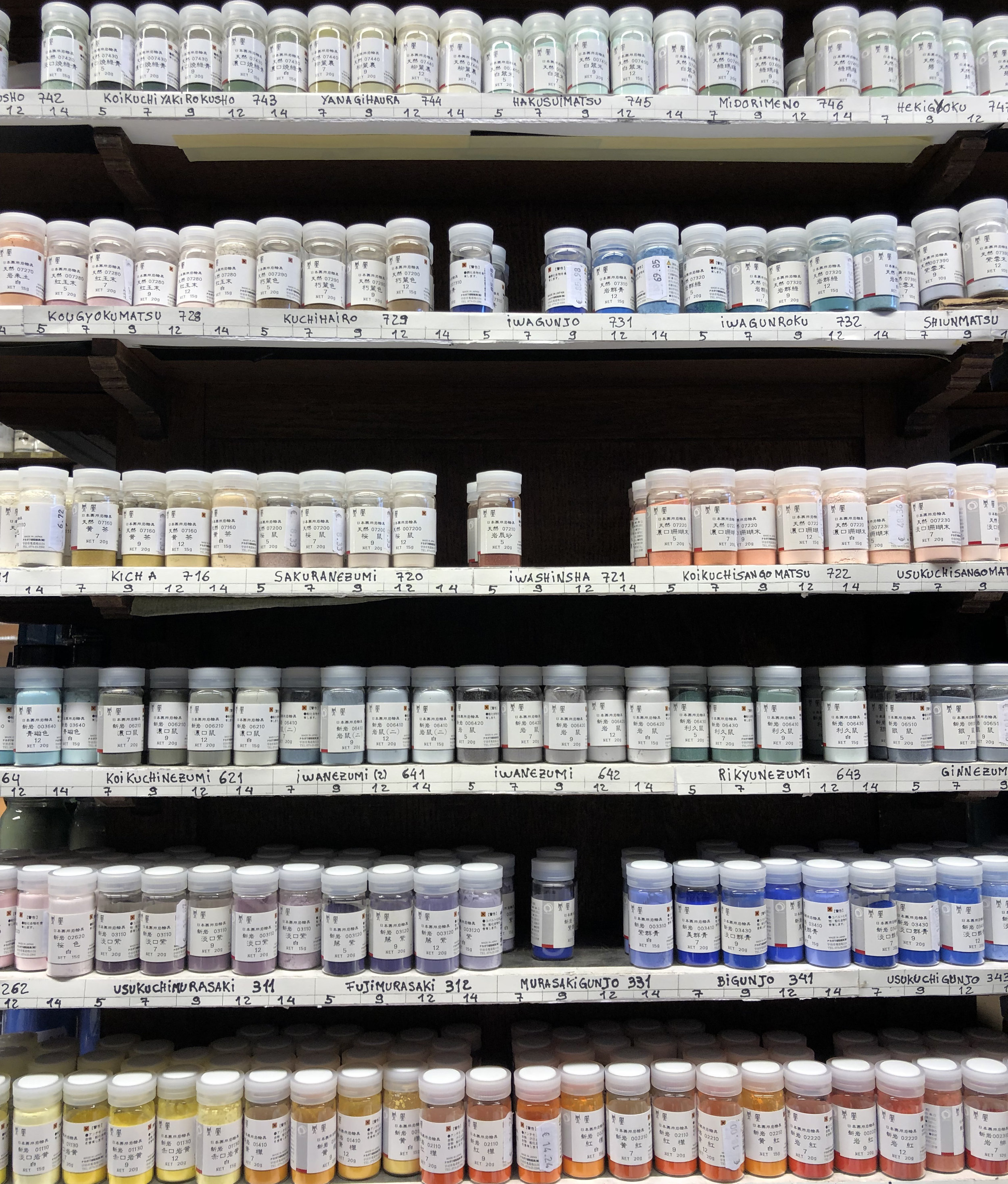Since moving to Luxembourg, I’ve found it challenging to find specific art materials here. So when I took a trip to Paris, I focused an entire day on researching and visiting art supply stores. After all, the paint I was looking for, flashe vinyl water based paint, is produced by LeFranc Bourgeois, a French company. The first art supply store on my list was, Magasin Sennelier.
3, QUAI VOLTAIRE - 75007 PARIS
There is history here; both in the collection of renowned artists who have sourced their supplies from these very shelves, as well as the origins of the vibrant pigments being sold. Like Paul Cézanne, Edgar Degas, Pierre Bonnard, Èdouard Vulliard, etc. etc - I was going to Paris for paint. It may sound romantic, but the reality of carrying around heavy and often awkwardly sized and fragile supplies is not.
This Parisian art supply store, located conveniently near both the Louvre and L’Ecole Des Beaux-Arts, opened its doors way back in the horse and buggy days of 1887. It was here, that founder & chemist, Gustav Sennelier began producing and developing his own line of pigments. Luckily for me, the Sennelier store is still just as viable today as it was then. I am happy to report that not only was I able to find a pleasingly organized wooden rolling shelf system, but also rows and rows of glass jars filled with my favorite paint.
Researching sources of specific colors continued past the doors of art supply stores. Walking around with jars of paint made me notice the many colors and designs of doors found throughout the streets of Paris.
How many doors in Paris can you document in one day?
In playing the game of “how many doors can I document in one day,” I began to notice a pattern. Many Parisian doors are blue. (FYI: There is even an entire instagram account, @bluedoorsofparis, dedicated to blue Parisian doors.) So why blue?
“Westerners have a history of undervaluing all things blue. During the Paleolithic and Neolithic periods, reds, blacks and browns reigned supreme; the ancient Greeks and Romans admired the simple triumvirate of black, white and red…In Rome wearing blue was associated with mourning and misfortune. (Exceptions to this ancient aversion to blue are more common outside Europe; the ancient Egyptians, for example were quite fond of it.)
…It was during the twelfth century that a sea change occurred. Abbot Suger, a prominent figure in the French court and an early champion of Gothic architecture, fervently believed in colours - particularly blues - to be divine.”
- The Secret Lives of Colour by Kassia St. Clair
A value chart of door swatches
Maggie Nelson loved blue so much she wrote an entire book about it, Bluets.
“ And so I fell in love with a color - in this case, the color blue - as if falling under a spell, a spell I fought to stay under and get out from under, in turns.”
My green purse matching the green door.
But let’s not forget about all the greens. St. Clair’s research from “The Secret Lives of Colour,” focused primarily on verdigris, absinthe, emerald, kelly green, scheele’s green, terre verte, avocado and celadon pigments. A common theme throughout her chapters about the values and shades of green is it’s two fold and tricky nature. On one hand green is “comforting images of countryside and environmentally friendly politics” and on the other, green has “a symbolic link with capriciousness, poison and even evil.”














